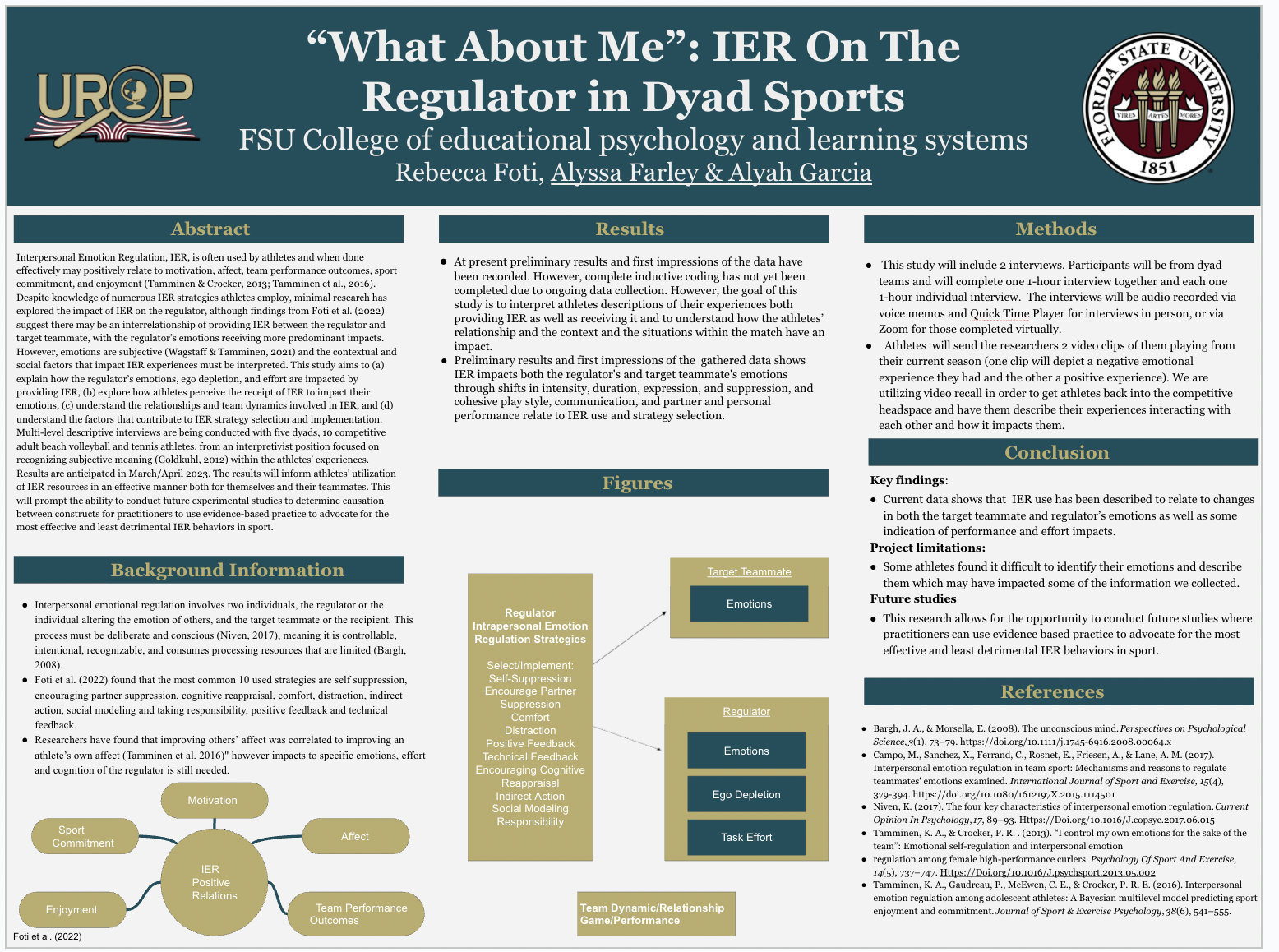Research Symposium
23rd annual Undergraduate Research Symposium, April 6, 2023
Alyah Garcia Poster Session 4: 4:00 pm - 5:00 pm/ Poster #184

BIO
Hi, my name is Alyah and I am from miami, Florida. I have a passion for sports and the medical field so this research project was perfect for me.
"What About Me”: IER On The Regulator in Dyad Sports
Authors: Alyah Garcia, Rebecca FotiStudent Major: Nursing
Mentor: Rebecca Foti
Mentor's Department: Psychology Mentor's College: FSU College of educational psychology and learning systems Co-Presenters: Alyssa Farley
Abstract
Interpersonal Emotion Regulation, IER, is often used by athletes and when done
effectively may positively relate to motivation, affect, team performance outcomes, sport
commitment, and enjoyment (Tamminen & Crocker, 2013; Tamminen et al., 2016).
Despite knowledge of numerous IER strategies athletes employ, minimal research has
explored the impact of IER on the regulator, although findings from Foti et al. (2022)
suggest there may be an interrelationship of providing IER between the regulator and
target teammate, with the regulator’s emotions receiving more predominant impacts.
However, emotions are subjective (Wagstaff & Tamminen, 2021) and the contextual and
social factors that impact IER experiences must be interpreted. This study aims to (a)
explain how the regulator’s emotions, ego depletion, and effort are impacted by
providing IER, (b) explore how athletes perceive the receipt of IER to impact their
emotions, (c) understand the relationships and team dynamics involved in IER, and (d)
understand the factors that contribute to IER strategy selection and implementation.
Multi-level descriptive interviews are being conducted with five dyads, 10 competitive
adult beach volleyball and tennis athletes, from an interpretivist position focused on
recognizing subjective meaning (Goldkuhl, 2012) within the athletes’ experiences.
Results are anticipated in March/April 2023. The results will inform athletes’ utilization
of IER resources in an effective manner both for themselves and their teammates. This
will prompt the ability to conduct future experimental studies to determine causation
between constructs for practitioners to use evidence-based practice to advocate for the
most effective and least detrimental IER behaviors in sport.
Keywords: sports, tennis, regulator


